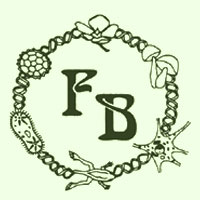Lakušić, D. |
| Molecular reappraisal confirms that the Campanula trichocalycina-pichleri complex belongs to Asyneuma (Campanulaceae) STEFANOVIĆ S & LAKUŠIĆ D. Pages 21-31 Full reference | Abstract | Full text PDF |
KEY WORDS: Balkans, Campanulaceae, molecular phylogeny, Asyneuma, Campanula, Physoplexis, Petromarula, trnL-F. |
| Threat status revision of some taxa from “The Red Data Book of Flora of Serbia 1” TOMOVIĆ G, ZLATKOVIĆ B, NIKETIĆ M, PERIĆ R, LAZAREVIĆ P, ŠEMIJA D, STANKOVIĆ M, LAKUŠIĆ D ANAČKOV G, KNEŽEVIĆ J, SZABADOS K, KRIVOŠEJ Z, PRODANOVIĆ D, VUKOJČIĆ S, STOJANOVIĆ V, LAZAREVIĆ M & STEVANOVNIĆ V. Pages 33-43 Full reference | Abstract | Full text PDF |
KEY WORDS: vascular flora, Serbia, extinct species, critically endangered species, distribution |
| Genus Leucojum L. (Amaryllidaceae) – distribution and threatened status in Serbia JOVANOVIĆ S, TOMOVIĆ G, LAKUŠIĆ D, NIKETIĆ M, PAVLOVIĆ M & BOŽA P. Pages 45-50 Full reference | Abstract | Full text PDF |
KEY WORDS: Leucojum, distribution, ecology, threatened status, Serbia |
| Leaf anatomy of the Sesleria rigida Heuffel ex Reichenb. (Poaceae) in Serbia KUZMANOVIĆ N, ŠINŽAR-SEKULIĆ J & LAKUŠIĆ D. Pages 51-67 Full reference | Abstract | Full text PDF |
A detail analysis has shown that local populations are anatomically very well differentiated into the serpentine populations from western and carbonate populations from eastern Serbia. KEY WORDS: Poaceae, Sesleria rigida, leaf-anatomy |
| New associations of serpentine chasmophitic vegetation (Asplenietea trichomanis Br.-Bl. 1934 corr. oberd. 1977) on Kopaonik Mt in Serbia DMITAR LAKUŠIĆ & BRANKO KARADŽIĆ Pages 67-79 Full reference | Abstract | Full text PDF |
KEY WORDS: chasmophitic communities, serpentine, ordination, classifi cation, Serbia |


